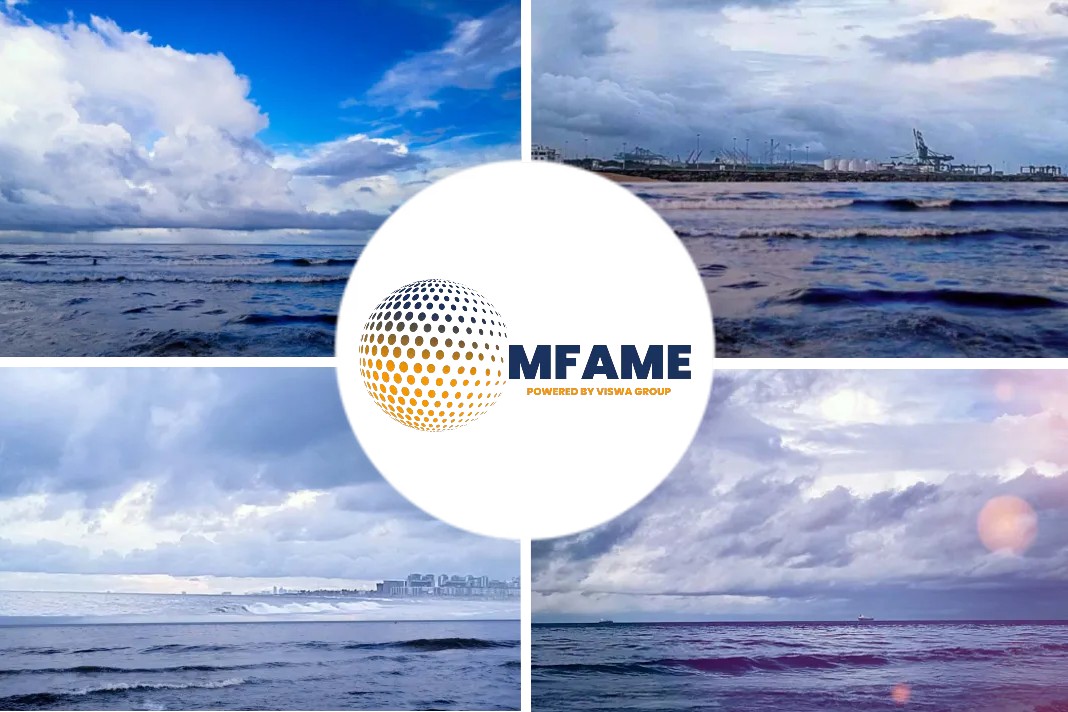
- The approval is part of a joint development project (JDP), started by the partners in May 2022.
- Furthermore, the design features Mark III membrane containment technology, developed by GTT.
- GTT has recently joined forces with BV on another project, to develop a large-scale liquid hydrogen (LH2) carrier.
French LNG containment specialist GTT and Chinese shipbuilder Shanghai Waigaiqiao Shipyard (SWS) have obtained approval in principle from classification society Bureau Veritas (BV) for the design of LNG dual-fuel very large crude carrier.
LNG dual-fuel VLCC design
This approval is part of a joint development project (JDP), started by the partners in May 2022.
SWS has designed the vessel with optimised hull lines and equipped with GTT’s high-technology system for LNG cargo containment, to enable safe and flexible carbon-neutral shipping.
The operational flexibility offered by this new 10,000 cbm capacity fuel tank concept allows ship owners and charterers to make round trip voyages between the Middle East, Asia, and Europe with a single LNG bunkering operation, according to the company.
The fuel tank has been located below the main deck to avoid exposure to bad weather and the risk of piracy, while lowering the centre of gravity of the propulsion systems.
Mark III technology
Furthermore, the design features Mark III membrane containment technology, developed by GTT.
Mark III technology is a cryogenic liner used to contain liquefied gas at low temperatures during shipping, onshore and offshore storage, at atmospheric pressure.
Since 2008, GTT has introduced Mark III design evolutions to improve the thermal and structural efficiency of the technology.
This technology and its evolutions equip more than 200 vessels in operation and under construction, according to GTT.
IMO’s environmental requirement
In addition to its operational benefits, the new LNG dual-fuel VLCC concept complies with the main environmental requirements of the International Maritime Organisation (IMO).
Specifically, its Energy Efficiency Design Index (EEDI) outperforms regulatory requirements (more than 37% below the reference line), its nitrogen oxide (NOX) emissions meet the International Maritime Organisation Tier III requirements and its Carbon Intensity Index (CII) is projected to be rated “A”.
Carbon indicator
CII is an indicator of carbon intensity, defined by the IMO, which is emitted in grams of CO2 based on the deadweight tonnage and distance traveled.
It measures how efficiently a ship transports goods or passengers. Since 1 January 2023, shipowners are required to start collecting data in order to obtain a ship rating from 2024.
“Following our successful references in the field of LNG-fuelled container and cruise vessels, we are pleased to offer this LNG membrane tank solution suitable for the tanker market,” Adnan Ezzarhouni, General Manager of GTT China, noted.
Emission reduction
“Our knowledge of LNG as a fuel was mobilised from the design phase of this dual-fuel VLCC. From plan approval to vessel classification, Bureau Veritas experts played a key role in ensuring this sophisticated tanker can take to the seas safely. Dual-fuel carriers pave the way for the future of the maritime energy transition.
A new generation of VLCCs will contribute both to decarbonisation of the maritime sector as a whole and to the reduction of Scope 3 emissions in countless other sectors,” Alex Greg-Smith, Senior Vice President Chief Executive, Marine & Offshore North Asia and China, Bureau Veritas, stated.
“We are pleased to bring this promising new solution to the market, which offers ship-owners enhanced flexibility and safety, while being fully compliant with the latest environmental regulations.
This development is a concrete achievement as well as an important step forward on the journey towards carbon neutrality,” Li Jianing, Director of Shanghai Waigaiqiao Shipyard R&D Department added.
Large-scale liquid hydrogen carrier
GTT has recently joined forces with BV on another project, to develop a large-scale liquid hydrogen (LH2) carrier.
The partners, together with energy major TotalEnergies and ship designer LMG Marine, signed a joint development project to work on a 150,000 cbm vessel that will be fitted with GTT’s membrane-type containment system.
Did you subscribe to our Newsletter?
It’s Free! Click here to Subscribe.
Source: Offshore Energy






















